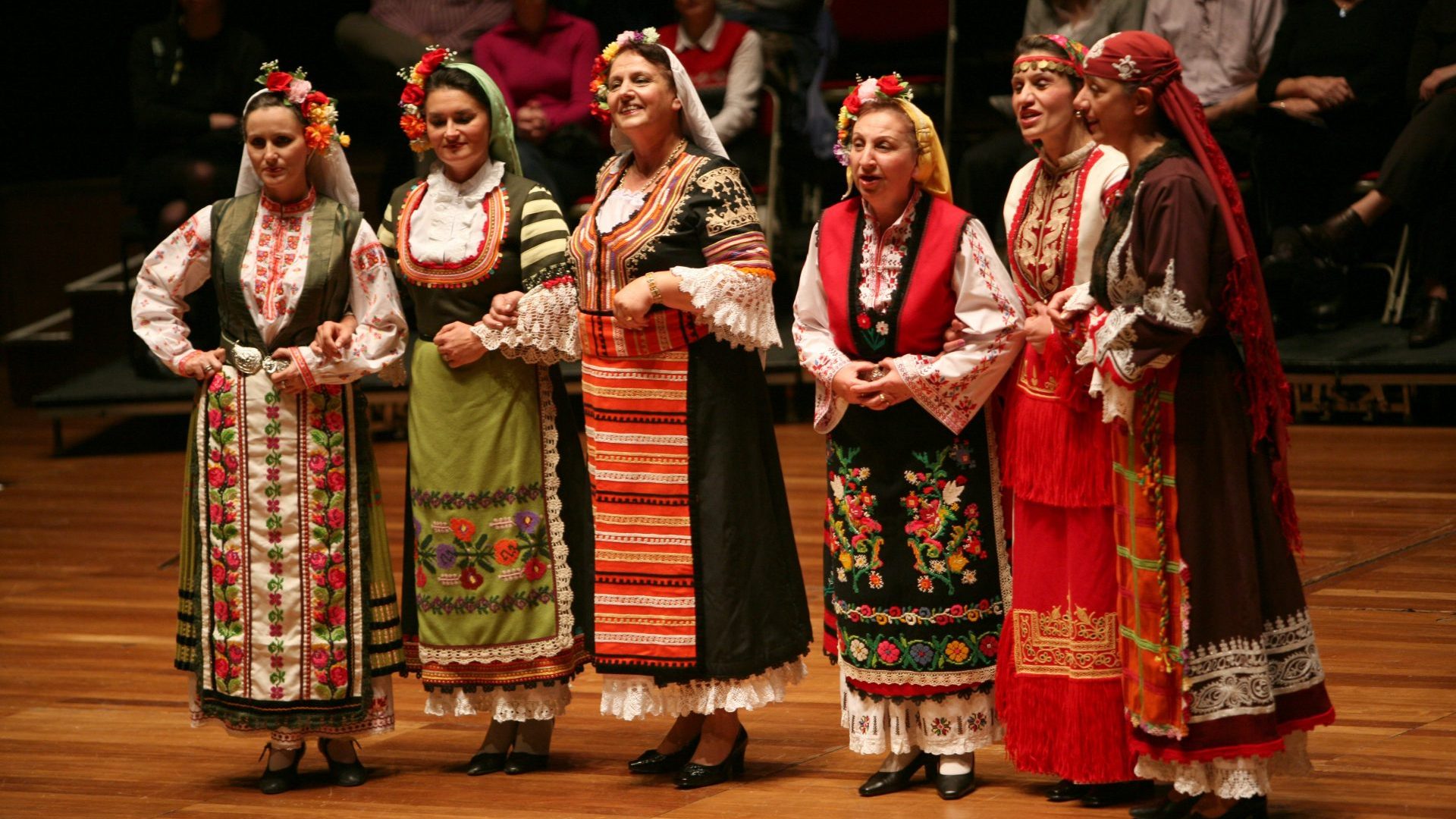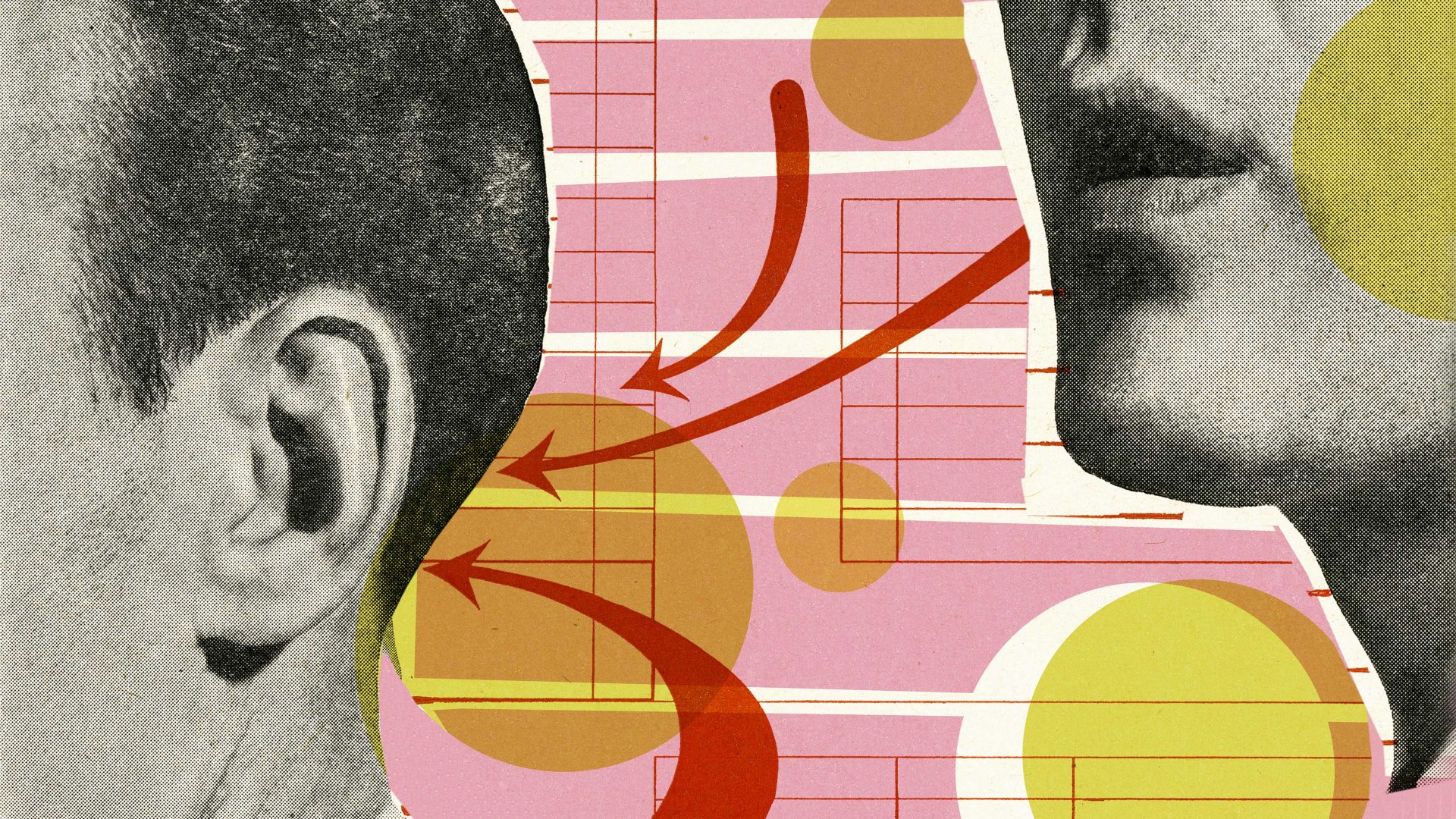We take the unlimited supply of music for granted in the 21st century. Boot up your laptop, and the entire history of recorded song is but a couple of clicks away. But just a few decades ago, this was far from the case. The story of how a battered old tape featuring a choir of Bulgarian women singing folk songs became a global phenomenon is an example of how the way we used to access culture was often via tortuously drawn-out routes. A few individuals played vital roles during the journey, including, in this case, one Swiss musicologist and the visionary owner of a small British record label.
The story begins in the early 1950s with the Bulgarian composer Filip Kutev. Since the second world war, the country had been firmly ensconced in the Soviet bloc, and Kutev was appointed director of Bulgaria’s State Ensemble for Folk Songs and Dances, his brief being to eliminate “non-socialist” elements in the country’s folk traditions. To this end, he formed a choral group that became the Bulgarian State Television Female Vocal Choir. But rather than insert blatant communist propaganda into their repertoire, Kutev began to experiment, introducing innovations drawn from modern classical music – drones, dissonance, unusual polyrhythms – into the existing canon of traditional folk songs.
On the other side of the Iron Curtain was Swiss DJ and ethnomusicologist Marcel Cellier. From the 1950s onwards, together with his wife, Catherine, he travelled across to the Balkans several times to make recordings of the Bulgarian State Television Female Choir. These were illicit, and Cellier had to record on cumbersome reel-to-reel tape recorders and then smuggle them back home. The recordings would feature regularly on the weekly radio show Cellier hosted in Switzerland, From the Black Sea to the Baltic, which ran from 1960 to 1985. Eventually, Cellier’s contraband tapes were compiled on a cassette and released in 1975 on the DJ’s own Disques Cellier label. It was a moderate success, with sales commensurate with what you might have expected for a record of Bulgarian folk music in the mid-1970s.
And that might well have been the end of that. Except that 10 years later, ex-Bauhaus singer Peter Murphy was working on his debut solo album. In the producer’s seat at Blackwing Studios in Southwark was Ivo Watts-Russell, the owner of 4AD Records. Every evening Murphy would play a secondhand cassette he had been given by an Austrian dancer of the Cellier recordings – and it caught Watts-Russell’s attention.
“It simply buckled my knees,” he later explained. “The more I listened to the album, the less interested I was in finding out how old the music was, or if any of the singers were still alive. The sound was all you needed, these incredible singers making sounds with lyrics that I couldn’t understand.”
It certainly was unlike anything most music consumers would have heard in the mid-1980s. The choir used open-throated singing, which gave the recordings an Asiatic flavour, and this, combined with the unusual rhythms and weird drone effects, gave the album an otherworldly flavour. The album had been named Le Mystère des Voix Bulgares, and it was apt. It sounded mysterious.
Watts-Russell was entranced, and asked Murphy how he had come by the cassette. This was a decade or so before the internet, and the 4AD owner had to venture to a specialist record shop on Charing Cross Road in London to bag a copy of the Cellier cassette, which led him to the man himself. He offered to license the record on 4AD so that it could become more widely available: “I just thought if it moves me, it’ll move other people, which was my modus operandi really.”
It helped that the cassette fitted his label’s whole aesthetic. Of all the heavyweight British independent labels of the 1980s, 4AD was perhaps the most enigmatic. Thanks to visionary designer Vaughan Oliver, its record sleeves were objects of stunning beauty that wouldn’t have looked out of place in a gallery, and certainly the roster leaned into the artier, more gothic end of the alternative scene. At the time the flagship artists were the Cocteau Twins and Dead Can Dance, both groups with female singers with such breathtaking voices that they could – and more often than not did – make individual lyrics redundant. When the Cellier cassette was released under its original French title, with a sleeve in the house style by Oliver, it slotted neatly into the whole 4AD oeuvre.
It was also released at an apposite time. The late 1980s saw the first stirrings of interest in music made beyond pop’s Anglophone heartlands. This was the era of “world music”, and while African guitar bands such as the Bhundu Boys were the most celebrated of this wave, Bulgarian folk music also had its place. The album began to climb the indie chart, and eventually sold 100,000 copies in the UK. When it was licensed in the US on Elektra/Nonesuch the following year it shifted over half a million.
Aside from a few plays on John Peel and Radio 3 (Richard Baker was especially partial to it), Le Mystère des Voix Bulgares was a genuine word-of-mouth phenomenon. There was enough material from the Cellier tapes for a second 4AD volume in 1988, which bagged a Grammy Award in 1989, collected by Cellier himself. Meanwhile, concert promoters began to sniff around. Offers to tour Europe and the US were made to the choir. And if they couldn’t get the real thing, by this time there were plenty of unscrupulous agents willing to present other choirs as Kutev’s original.
Eventually, after the fall of the communist regime in December 1989, the world opened up to the choir. Live, they were accompanied by bagpipes, shepherd’s flute or tambura, and wore traditional Bulgarian costumes.
Artists from Paul Simon to Linda Ronstadt to Jerry Garcia of the Grateful Dead raved about them, and Kate Bush featured three soloists from the choir on her albums The Sensual World and Red Shoes, as Trio Bulgarka.
With their renown spreading, Cellier registered the name Le Mystère des Voix Bulgares with the UN’s World Intellectual Property Organization. By 1997 he had won worldwide rights to the name, which, if nothing else, put a stop to the many bogus choirs.
Further compilations were released during the 1990s, and then in 2018 came BooCheeMish, a new album – their first for two decades – a collaboration with another old 4AD artist, Lisa Gerrard, one half of Dead Can Dance. She had been bewitched by the voices when she first heard them.
Kutev, the man who had started it all, died in 1982, not living to see his charges find global fame. Cellier, who kept in touch with the choir well into his dotage, died in 2013. Watts-Russell quit the music business around the turn of the millennium, but remarked in a 2011 interview that he rated the Voix Bulgares albums among the releases he is most proud of: “I’m really damn glad that it became part of the 4AD legacy… It’s timeless.”
And their gift to the world keeps on giving. In 2023, the choir are still performing and touring, though as a sop to our largely Anglophone world they have changed their name to the rather more prosaic-sounding The Mystery of the Bulgarian Voices. As with any choir, membership is constantly shifting, but as of 2018 there was still one remaining member who had featured on the original album. Elena Bozhkova was just 25 when she auditioned for the choir in 1972. “We were happy, but not proud,” she said in a 2018 interview, about their unlikely fame. “We did not feel like stars, just normal people.”
There is a deep irony to the Voix Bulgares story – how a choir formed with the specific intention of advancing socialist ideology ended up making money for western record companies, music promoters and agents – but also how the choir has long outlasted the communist state itself. Now their homeland is in the EU and they have freedom of movement. Crucially, their music now flows around the world via the internet; free and, as Watts-Russell noted, timeless.
Will Simpson’s book An American Cricket Odyssey: A Journey Through the 21st Century Trials and Tribulations of the Game Stateside will be published next year



